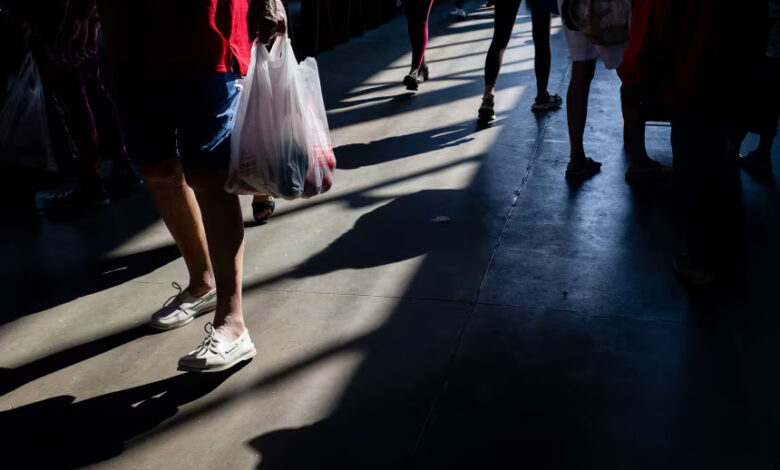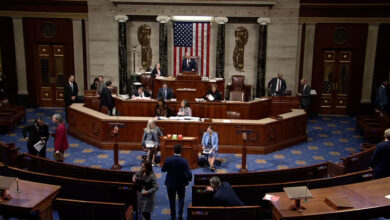
Austin H. can’t wait to buy a house and start a family. But right now, the 34-year-old is barely getting by.
Austin is living paycheck to paycheck and saving almost no money, one of the millions of Americans struggling to make ends meet in an increasingly unaffordable economy.
Worse, the family-owned construction business he works at is shutting down.
“I am going to be unemployed in the next month or two – with no safety net,” said Austin, who declined to share his last name.
An estimated 24 percent of US households are living paycheck to paycheck so far in 2025, according to a Bank of America Institute analysis released this week. The bank’s researchers combed through internal data on its tens of millions of consumers and tracked how much income customers spent on necessities like housing, gasoline, groceries, child care and utilities.
They found that 24 percent of households spend over 95 percent of their income on those necessities, leaving little to nothing left over for the “nice-to-have” things like going out to dinner or taking a vacation, let alone saving.
No margin for error
Austin, who has a master’s degree in fine arts, said he’s applied to roughly 1,000 jobs over the past year – everything from teaching to construction – with no luck.
“To be 34 and living paycheck to paycheck with no savings, things are pretty crappy right now,” he said.
Austin is supporting his partner, a veterinary student, and worries about how the two of them will pay off his student debt on top of all their other expenses.
“We want to own a house and start a family, but I don’t know how we will ever get our feet under ourselves,” he said.
‘Living in two different worlds’
The Bank of America report is evidence of the K-shaped economy, where affluent Americans are faring far better than those at the bottom.
Many are struggling to get by, even as President Donald Trump dismisses affordability concerns as a “con job” conjured up by Democrats based on “fake” polls.
But the rate of increase in households living paycheck to paycheck has slowed significantly this year, and while there is little change this year for middle- and high-income households, the share of lower-income households living paycheck to paycheck has jumped from 27 percent in 2023 to 29 percent, according to Bank of America.
“Higher income and lower income households are living in two different worlds,” Joe Wadford, economist at the Bank of America Institute, told CNN.

A growing wage gap
The problem is that paychecks among lower-income households are often not keeping up with prices – especially now that inflation has reaccelerated.
After-tax wages increased about 2 percent in October year over year among middle-income consumers, Bank of America found. That’s below the 3 percent inflation rate as of September.
Wage growth for lower-income Americans is falling even further behind. Their after-tax wages increased just 1 percent year-over-year.
By contrast, high-income wages jumped 4 percent, safely outpacing the increase in the cost of living.
Wadford said the wage growth gap between high- and low-income Americans hasn’t been this high since 2016.
‘We’re getting nowhere’
For Millennials like Austin, that gap is even bigger.
Wages have inched up just 1 percent for low-income Millennials, compared with 6 percent for high-income.
“We work full-time and have degrees. And we’re getting nowhere,” Austin said.
Gregory Daco, chief economist at EY–Parthenon, said the large number of households living paycheck to paycheck underscores the “deepening affordability crisis” caused by five years of price hikes that have outpaced income gains.
For the broader economy, the risk is that many families struggling to get by and worried about their jobs opt to spend much more cautiously.
“This could weaken the foundation of a consumer-driven economy,” Daco said.
That’s especially true if layoffs gather steam in what had been a no-fire, no-hire job market.
Goldman Sachs economists warned in a recent research report of a growing “risk of labor market deterioration.” The Wall Street bank estimates there is a 20 percent to 25 percent chance that the US unemployment rate jumps by at least 0.5 percentage points in the next six months. That’s up from just a 10 percent chance as of six months ago.
Subprime auto loan troubles
Some Americans are falling behind on their bills – especially those with low credit scores.
The percentage of subprime borrowers who are at least 60 days late on their car loans climbed to 6.65 percent in October, according to Fitch Ratings.
That is the highest since Fitch tracking began in the early 1990s, surpassing the prior peak set in January and well above levels during the Great Financial Crisis.
This trend is a clear sign of financial distress, especially since car loans are historically the last payment Americans are willing to miss.
Bank of America has found that the number of households making just the minimum payment on their credit card is also rising, though so is the share of credit card users paying off their entire balance each month.
“There is a mixed bag. There are some signs of consumer health, and yet, within the minority of people experiencing financial stress, pressure is mounting,” said Wadford, the Bank of America economist.
Vanessa Jones, a 65-year-old grandmother living in Davenport, Iowa, took on a second nursing job two years ago because she couldn’t make ends meet.
“The cost of living is way too high. My savings have been depleted. I haven’t tapped into my retirement, but that looks like the next step,” she said.
Jones, the primary caregiver for her two grandchildren, was recently diagnosed with cancer and wound up with “astronomical” medical bills. Facing $85,000 in medical debt, she filed for bankruptcy.
Jones pushed back on politicians arguing there is no affordability crisis.
“The people claiming prices are lower are not actually buying their own groceries or trying to find the cheapest place to get their car fixed,” she said. “They need to walk in our shoes.”




